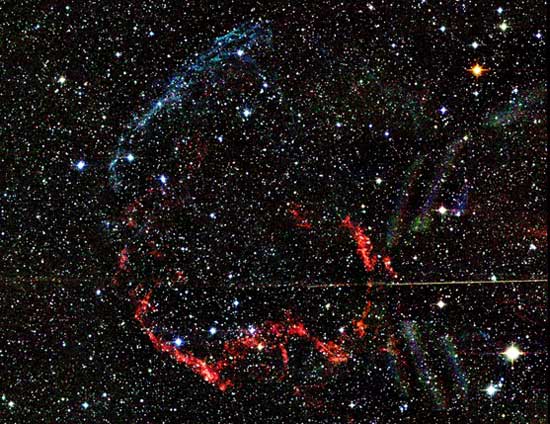Galactic Supernova Remnant IC 443

Explanation:
About 8000 years ago, a star in
our Galaxy exploded.
Ancient humans might have noticed the
supernova as a temporary star,
but modern humans can see the expanding shell
of gas even today.
In the
above false-color infrared image of
supernova remnant IC 443,
blue denotes expanding gas where
emission is dominated by excited iron atoms.
Of particular interest, though, are the wisps of
IC 443 colored red,
as they are impacting an otherwise normal
molecular cloud.
Here emission from shock-excited molecular
hydrogen is allowing
astronomers to study how fast moving supernova
gas affects star formation in the cloud.
Additionally,
astronomers theorize that the impact accelerates
some particles to velocities near the speed of light.
The horizontal line across the image is not part of the nebula.
Authors & editors:
Robert Nemiroff
(MTU) &
Jerry Bonnell
(USRA)
NASA Web Site Statements, Warnings,
and Disclaimers
NASA Official: Jay Norris.
Specific
rights apply.
A service of:
LHEA at
NASA /
GSFC
& Michigan Tech. U.

